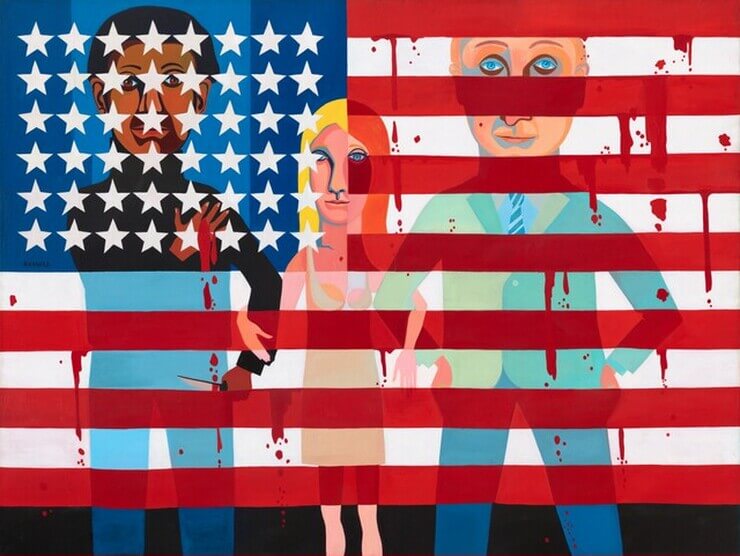As we begin Black History Month, I think it is important that we both celebrate that important part of American history (which deserves more than a month!) and confront the harsher realities of our past.
There have been efforts in many states to limit the teaching of certain parts of American history. We saw the College Board grapple with the politics of an Advanced Placement African American Studies course. Proposed legislation has tried to ensure that students do not “feel guilt or anguish, or other forms of psychological distress” around the teaching of history. Such laws are a backlash against what is perceived as growing political indoctrination in teaching.
For educators to claim there haven’t been efforts to impose an ideology on students is just not accurate. I experienced this myself in college and graduate school, during which I had a couple of professors who wanted me to think a certain way. Nevertheless, I find that much of this is overblown and exaggerated. I had fun debating my teachers when they pushed a certain line. Such laws feel like an overreach and are also dangerous to our democracy. Most teachers across the nation understand the responsibility they have when presenting and managing challenging material.
I certainly see Colorado Academy faculty members being thoughtful as they try to create positive classroom environments in which diverse viewpoints are expressed. As many of you have heard me say before, one of the most fundamental aspects of a quality education is helping young people to think critically and be independent thinkers. I certainly do not think we should impose any idea on students without asking students to think about the merits of that idea as well as its weaknesses. Sitting in on any class at CA, it is fun to hear students and teachers grapple with big ideas and argue and debate. That is core to intellectual growth.
However, those ideas can sometimes be uncomfortable, and that is actually a good thing. I just finished teaching my course on the history of the American West. In that course, we looked at the complex interaction between white Americans, Native Americans, Hispanics, African Americans, and Asian Americans. A guest lecturer shared his research about the Camp Grant Massacre—a mass killing of over 144 innocent women, children, and elderly Apache. The victims were murdered in the early morning hours in April 1871, and nearly all were scalped. One hundred and forty killers took part in the massacre…and here is where it gets challenging: Ninety-two of them were Tohono O’odham Indians, 42 were Mexican Americans, and six were white. The idea behind the massacre largely came from Anglo-Americans; but the main participants were groups who also had been displaced and marginalized by whites. These Indian and Mexican American participants had been victims of Apache depredations for well over a hundred years.
I relate this story not to excuse or obfuscate white racism—it’s a real thing that needs to be confronted—but to underscore the complexity of our past and why we must dig deeply into our history. Of course, we always want to do this in age-appropriate ways. My class is for Juniors and Seniors, but I also know students, even young children, are far more resilient and can handle tough issues and big ideas. Most importantly, we can’t shield them from unsavory parts of our past. Do some kids have an emotional reaction to learning about tragic events? They might; but in my experience, this hasn’t made students hate their country or hate themselves. As I have written before, often the stories of individuals who face down oppression and rise above it can be important examples for our kids and can help our students be change agents in making a better society. We can’t understand their stories of heroism and accomplishment without understanding the environment and oppression they confronted.
Even as we honor Black History Month, I have been appalled at the vandalism done to a Jackie Robinson statue in Kansas. We don’t know the motives, but it’s hard not to think of this as racially motivated. In response, Major League Baseball has taken action to replace the statue and several hundreds of thousands of dollars have been raised. The public’s knowledge of what Jackie Robinson accomplished and what he endured is one reason why there has been such an empathetic and positive outcry.
So, a little homework for our students, families, and faculty: Spend some time this month researching some fascinating figures in African American history. Here are few names to consider:
- Althea Gibson
- Howard Thurman
- Ella Baker
- Fannie Lou Hamer
- Gordon Parks
- Gil Scott-Heron
- Jane Bolin
- Bessie Coleman
- Charles Richard Drew
- James Armistead Lafayette
These are artists, athletes, politicians, theologians, jurists, pilots, and even a spy who played a key role during the American Revolution. I think Black History Month plays an important role, but I also think this is American history, and not weaving together the experience of African Americans, as well as that of other groups, is a disservice to our students. History is formed by the interactions that humans have with one another. Our nation’s history has been a history of progress in terms of the expansion of rights and liberties for all Americans. That is a positive thing, and we can’t understand that progress if we don’t know where we came from.
